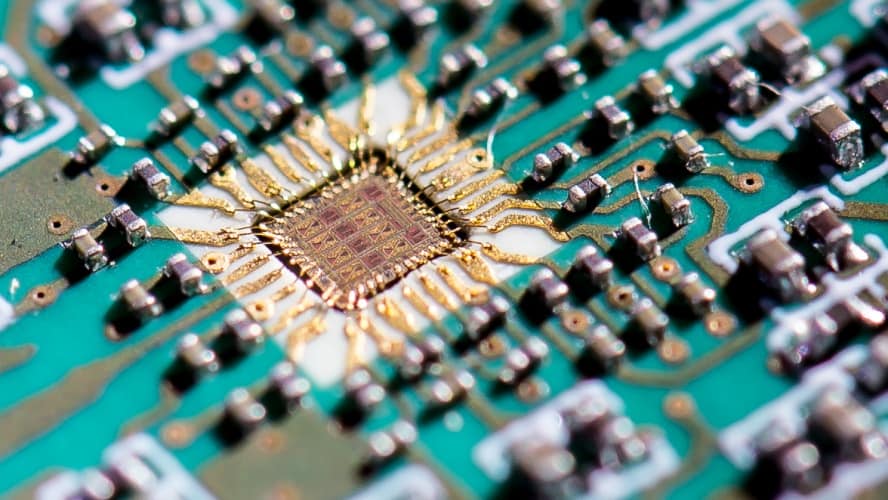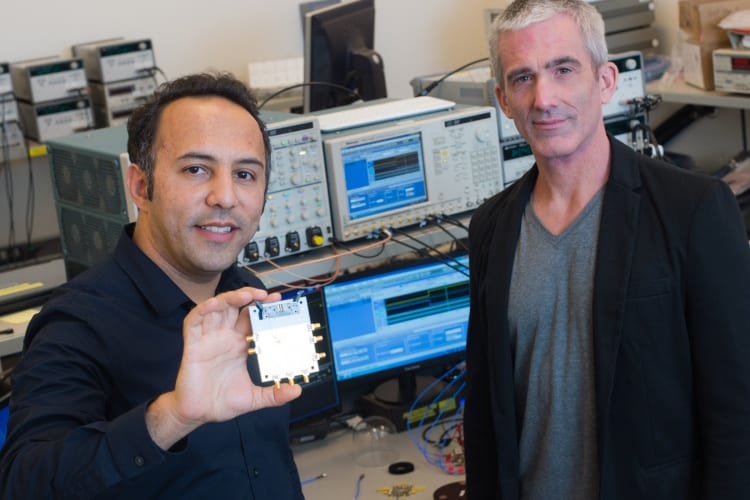
The team is panning on using pulse-based technology, first demonstrated by Marconi in the early 1900s when he used an antenna connected to a large capacitor. By charging that, he could cause the power to build up until the voltage difference ionised the air gap, causing all the power to be sent to the antenna at once.
“Our pulse-based system is inspired by Marconi’s invention, but instead of the power going to a large antenna through an air gap, like Marconi’s, ours goes to an on-chip antenna through a high-speed bipolar transistor,” said research co-lead Aydin Babakhani, assistant professor of electrical and computer engineering at Rice.
The silicon-germanium chip converts a digital trigger to a 5-picosecond pulse of radiation with a frequency spectrum exceeding 1 terahertz. The chip supports a repetition rate up to 10 gigahertz, provides beam-steering capability and contains a two-by-four array of transmitters with antennas that can each be independently programmed with resolution steps of 300 femtoseconds.
“We’re storing magnetic energy on the chip, and then using a simple digital trigger to release that,” said Babakhani.
“Once released, it radiates as a picosecond impulse. There is no oscillator: It’s direct digital-to-impulse radiation. Unlike laser-based pulse systems, which can send even shorter pulses, ours can send many pulses very fast, which translates to a high pulse-rate frequency, something that’s vital for achieving the data speeds we are targeting.”

A 2016 Cisco study found global mobile data traffic grew by 74 per cent in 2015, rising to 3.7 exabytes (almost 30 million terabits) per month in December last year. The same report found that smartphone data usage grew 43 per cent in 2015, with the average user consuming 929 megabytes per month. A large proportion of this increase is attributed to the growth of online video and the popularity of streaming services such as Netflix, Amazon Prime and BBC’s iPlayer. According to the researchers, a 1 terabit-per-second signal could simultaneously stream about 200,000 high-definition movies.
“Breaking the terabit-per-second barrier with radio will enable an entirely new set of wireless applications and communication paradigms,” said Edward Knightly, professor and chair of Rice’s Department of Electrical and Computer Engineering.
“We’re focusing like a laser but we’re using radio. The challenge is to steer that beam to the right place at the right time and to follow users as they move.”




Poll: Should the UK’s railways be renationalised?
I think that a network inclusive of the vehicles on it would make sense. However it remains to be seen if there is any plan for it to be for the...